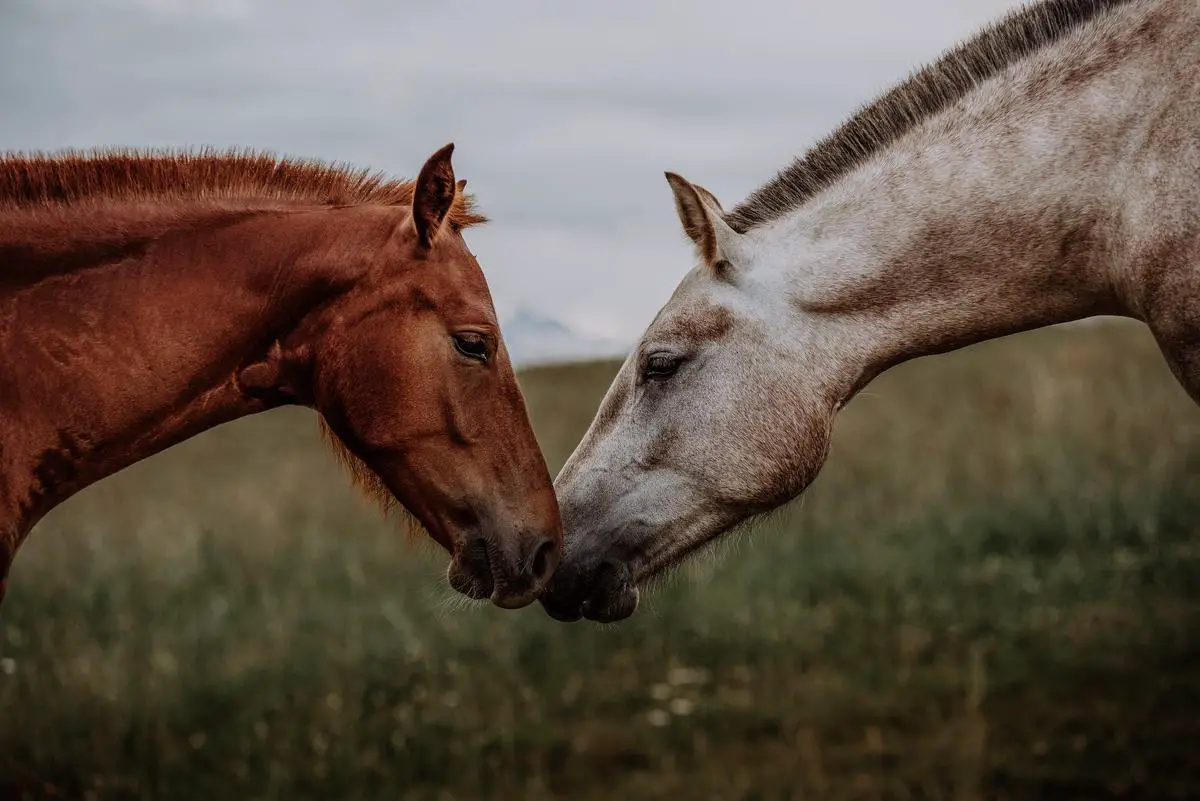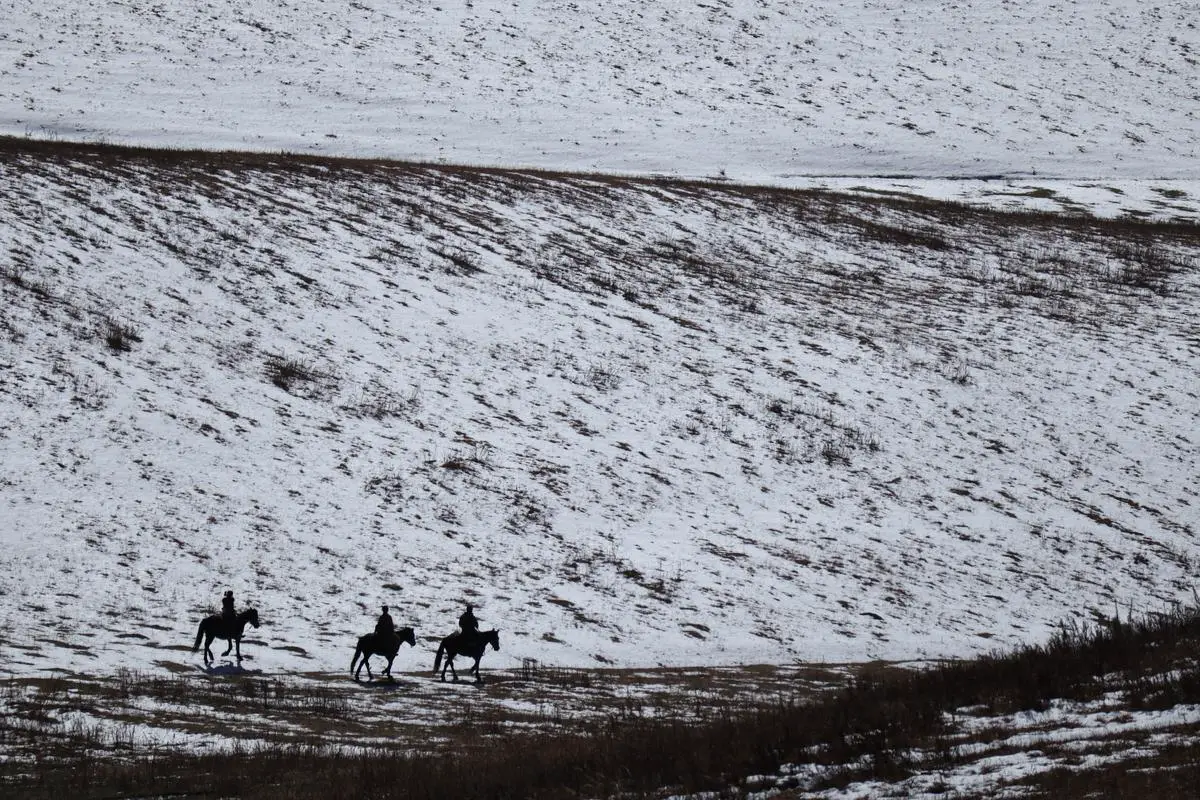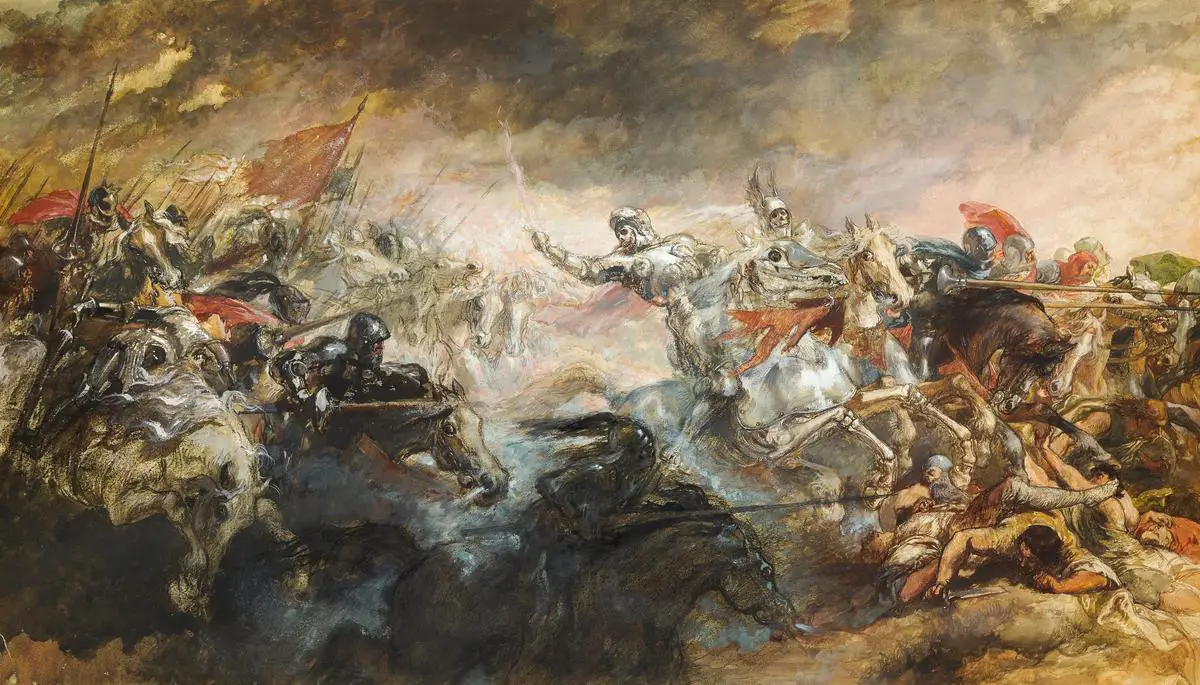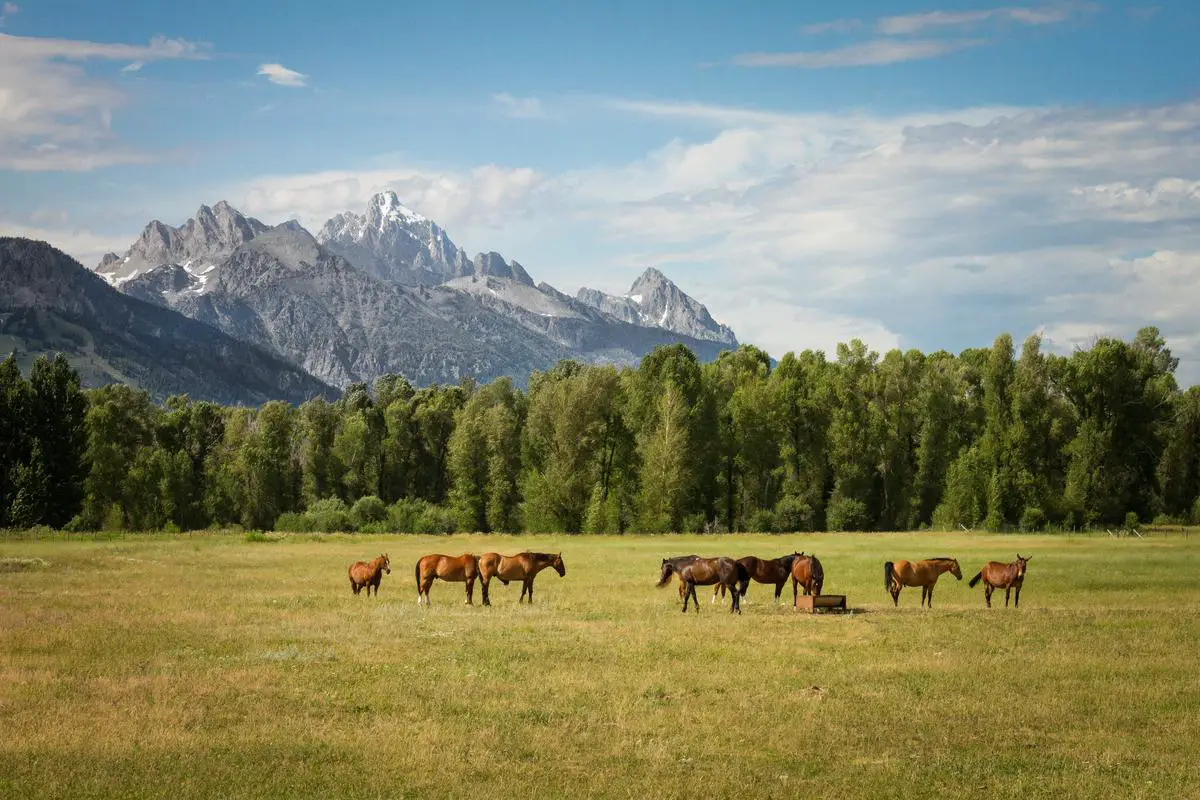Imbued with tradition, valor, and a mesmeric connection with the land, the exquisite tapestry of Hungarian equestrian culture is as spellbinding as the country’s scenic beauty. Tracing the hoofprints back to the annals of history, one discovers a rich heritage where horse and rider gallop in harmony, not merely as a sport, but as an integral part of Hungary’s social fabric. From the legendary Hungarian horse breeds, revered for their majestic poise and resilience, to the significant roles they played in historical battles, the equestrian practices in Hungary have undergone a fascinating evolution over centuries. Today, popular equestrian sports like horse-ball, dressage, and show jumping, continue to beguile enthusiasts, while the prominent locations remain testimony to this enduring culture. Debunking the story of Hungarian equestrian culture further allows for an immersive journey into the socio-cultural landscapes of this intriguing country.
Table of Contents (Horspedia)
History of Hungarian Equestrian Culture
Hungarian Equestrian Origins and Historical Importance
The culture of Hungary, a Central European country, has been intricately entwined with equestrian practices for centuries. The significance of horses is believed to trace back to the Magyars, these ancient tribes who originally settled in the Carpathian Basin around 895 AD. These tribes were well-known for their equestrian lifestyle and used horses as primary modes of transport, in farming, hunting, warfare and sporting activities. An integral part of this Bronze Age culture, horses were regarded as symbols of power and prosperity.
Horses in Hungarian Warfare
The role of horses in Hungarian society extended to historical battles. From the 9th to the late 17th century, the mounted Magyar warriors (or huszárs) struck fear into their enemies. Strategically, they utilized the natural speed, agility and power of horses to outmaneuver heavy infantry and engage in unexpected flanking maneuvers, making them a pivotal force on the battlefield. In the 15th century, during the reign of Matthias Corvinus, the Black Army had an elite heavy cavalry unit, where horses played a crucial role in the King’s military success. The equestrian traditions have been kept alive in the Hungarian Defence Forces even to this day.
Development and Evolution of Hungarian Equestrian Culture
Over the centuries, Hungarian equestrian practices evolved, adapting to changes in society and technology. Yet the importance of horses in everyday life has never diminished. Today, Hungary holds various equestrian events and festivals to celebrate its deep-rooted equestrian culture. The widely recognized Hungarian Horse Show, for instance, showcases traditional riding skills and includes chariot races, a horse-herding demonstration, and a display of the fearsome horse archery—a homage to the mounted warriors of old.
Hungarian Horse Breeds: The Hungarian Warmblood and Shagya Arabian
Hungary is renowned for breeding some of the finest equine breeds. The Hungarian Warmblood, or Magyar sportló, is one such horse breed that has been carefully developed for modern equestrian sports—show jumping, dressage, eventing, and combined driving. Promising agility and endurance, these horses reflect the enduring importance of equestrian culture in Hungary.
Another important breed is the Shagya Arabian, a distinct breed developed in Hungary in the early 19th century. These horses are known for their toughness, soundness, and versatility across a wide range of equestrian sports. From serving as cavalry horses to being successfully used in endurance riding and other modern equestrian sports, they underline the country’s dedication to maintaining and improving its equestrian heritage.
In Hungary, horses represent more than just a part of the animal kingdom. They carry significant cultural and historical symbolism stretching back centuries. From the times of the ancient Magyar tribes to current equestrian enthusiasts, horses have and continue to be an essential part of Hungarian society. They are not just historically significant, but also remain dynamically relevant, depicting the very heart and spirit of the country.

Photo by larabaeri on Unsplash
Traditional Hungarian Equestrian Sports
Historical Roots of Hungarian Equestrian Sports
The Hungarian equestrian tradition stems from a rich history. The ancient Magyars, known for their nomadic lifestyle revolving around herding, are believed to have effectively utilized horses in hunts and battles. Even today, equestrian sports such as horse racing, dressage, show jumping, horse-ball, and eventing are held in high esteem in Hungary.
Horse Racing
Horse racing is a popular sport in Hungary with historical significance. Both flat racing and steeplechase are popular formats. Kincsem Park, located in Budapest, is the central hub of horse racing in Hungary. Kincsem, the racecourse’s namesake, was a famous Hungarian horse undefeated in her 54-race career in the 19th century, thus establishing Hungary as a racing powerhouse. Races generally have specific rules about horse age and the weight of jockeys. However, rules may vary for different race events.
Dressage, Show Jumping, and Eventing
Dressage, show jumping, and eventing are equestrian sports that deal more with the display of form, accuracy, and horse-rider connection. Hungarian riders frequently participate in national and international dressage, show jumping, and eventing competitions. The Riding for the Disabled Association’s (RDA) National Championship, to name one among many events, showcases Hungarian talent in these disciplines.
Horse-Ball
Horse-ball, although less traditional, is gaining popularity in Hungary. This sport is a blend of polo and basketball. Teams consist of six players, four on the field and two as substitutes. The objective is to score goals by throwing a ball into the opposing team’s net. Horses must be a minimum of five years old to compete in this sport.
Impact on Hungarian Culture
These equestrian sports have instilled a deep respect for horses within Hungarian culture. The image of a noble steed is intertwined with national history and believed to symbolize freedom and agility. Hungarian culture also reflects the value of horsemanship skills and care for the animal. Events related to equestrian sports serve not only as competitive venues but also as social gatherings that celebrate the traditional horse culture. Moreover, the love for these sports has also resulted in a thriving horse breeding industry in Hungary.
Significant Events and Championships
Hungary regularly participates in global equestrian events, like the FEI World Equestrian Games and the Olympic Games. Additionally, national events such as the National Gallop (Nemzeti Vágta) are important celebrations of equestrian sports in Hungary. The National Gallop, a weekend-long event in September held in Budapest, features horse races and showcases traditional Hungarian horsemanship.
Hungary’s Noteworthy Equestrians
Over the years, Hungarian equestrians have carved an iconic path in global horse-riding sports. Notable figures such as Gyula Dallos, known for his exceptional performance in dressage, and Tibor Pető, a long-standing competitor in jumping events, have elevated Hungary’s position in these sports. Also, Gábor Fábián, having competed in multiple World Driving Championships, adds to the list of Hungary’s impactful equestrians. This exemplifies the high standard of equestrian skills that the country consistently produces.

Photo by kmitchhodge on Unsplash
Modern-Day Hungarian Equestrian Culture
The Evolution and Popularity of Horsemanship in Hungary
The correlation between Hungary and equestrian culture dates many generations back. The Magyar, a Hungarian breed of horse, has played an instrumental role in the country’s survival and progress since the Magyar’s conquest of the Carpathian Basin in 895 AD. Over the years, horse riding in Hungary has evolved from a pure means for transportation and labour, to a symbol of status and nobility. Nowadays, it has seeped into all strata of society and is enjoyed as a leisure activity, as well as a competitive sport by people of various ages. This ranges from young children picking up the reins at local riding schools, to experienced riders battling it out at national and international championships.
Hungary is home to several riding associations that organize an array of riding programs and events to motivate more people to take up horse riding. In addition, the Hungarian government actively promotes the sport by setting up necessary facilities and providing financial aid for maintenance and training.
Status of Equestrian Sports in Hungary
Equestrian sports have carved a formidable place in Hungary’s athletic landscape. The nation boasts of accomplished riders who participate in international competitions like the European Championships, the World Equestrian Games, and even the Olympics. Show jumping, dressage, and eventing form the backbone of the equestrian sports system in Hungary.
In contrast to some western countries where horse racing is the dominant equestrian sport, Hungary has a more diverse spread. While horse racing certainly has its followers in Hungary, it shares the platform with other equestrian sports such as dressage, show jumping, eventing, driving, and endurance riding.
Promotion of Horse Riding in Hungary
Several steps have been undertaken to promote horse riding across the country. Hungary is home to numerous clubs and associations that cater to the equestrian sports sector. The Hungarian Equestrian Federation, for instance, plays a significant role in advocating for the sport, developing training programs, and organizing competitions at various levels. Young enthusiasts are encouraged to join local riding schools, which provide comprehensive training programs that aim to inculcate essential horsemanship skills.
Renowned Hungarian Riders
Hungary has produced numerous skilled riders who have represented their nation on the global stage. Some contemporary Hungarian equestrians of note include Sandor Szasz, a renowned figure in show jumping, and Kristina Cook, who has multiple championship titles to her name. They, among others, inspire the next generation of equestrians in Hungary, proving that the nation continues to be a formidable player in the international equestrian scene.
Characterized by a unique blend of tradition and modernity, the equestrian culture in Hungary stands testament to the nation’s deep-rooted love for horses. Even though it has evolved over time, the core essence of horse riding — be it for sports, leisure or merely an appreciation for these majestic animals — continues to be integral to the Hungarian lifestyle. This commitment to uphold the rich equestrian heritage is evident in various aspects of the society, contributing significantly to Hungary’s vibrant cultural tapestry.

Notable Hungarian Equestrian Locations
Emblematic Kincsem Park
A beacon of this equestrian culture is the renowned Kincsem Park, famed for housing the Budapest Horse Racing Track. Established in 1925 and named after the celebrated Hungarian racehorse Kincsem, which translates to ‘precious’ in English, the park enjoys a rich history. It functions not only as the epicenter for national and international horse racing events but also as a significant hub for social activities. The park’s steadfast efforts to popularize horses and horse racing in the country are indicative of its substantial contribution to reinforcing and perpetuating Hungarian equestrian culture.
Puszta’s Great Plains
The Great Plains region, known as Puszta, which spans across eastern Hungary, is integral to the country’s equestrian culture. A significant part of Puszta’s identity stems from the traditional Hungarian horsemen known as csikós. Visitors to the Puszta can witness these horsemen perform daring stunts and traditional maneuvers demonstrating their brilliant horse riding skills. Riding schools are located across the region, many stationed near historical farms that have nurtured the horsemanship tradition since the Magyar tribes’ initial settlement.
Bábolna National Stud Farm
The Bábolna National Stud Farm, established in 1789, reaffirms Hungary’s reputation as a country dedicated to breeding fine horses. The farm was instrumental in developing the Shagya Arabian breed, as it specialized in breeding purebred Arabians for military and agricultural use. Today, the farm continues its tradition of breeding quality horses and serves as a repository of equestrian knowledge and history, making it an indispensable part of the Hungarian equestrian culture.
National Gallop in Budapest’s Hero’s Square
Hungary’s equestrian culture comes alive annually at the National Gallop (Nemzeti Vágta) held in Budapest’s Heroes’ Square. Rooted in Hungarian history, the horse races are a tribute to the heroic Hussars, the light cavalry historically used by the Hungarians. The event also includes a procession known as the Equis Circus, featuring riders in traditional clothing, thus presenting a vibrant representation of Hungary’s equestrian heritage.
Szilvásvárad Lipizzaner Stud Farm
Situated in northern Hungary, Szilvásvárad Lipizzaner Stud Farm is known for preserving and breeding the Lipizzaner horse breed. Considered the epitome of European classical dressage, these horses are cherished for their elegance, athleticism, and intelligence. The farm, with its museum and interactive programs, serves as an important educational center and has been integral to promoting equestrian sports in Hungary.
Göcsej Village Museum in Zalaegerszeg
The Göcsej Village Museum in Zalaegerszeg provides an insight into the traditional Hungarian rural lifestyle, with horse-related activities being a significant part. Here, you can learn about old Hungarian breeds, horse-driven agricultural tools, and the central role horses played in traditional farming life.
Mezőhegyes State Stud
Mezőhegyes State Stud, established in 1784, was once Europe’s largest horse breeding facility and remains a significant player in Hungarian equestrian culture to this day. Known initially for producing military horses, Mezőhegyes now breeds warmblood sport horses, Furioso-North Star, and Nonius horses, the latter two breeds being of local origin. With its rich history, it provides a glimpse into Hungary’s equestrian past, still impacting the country’s horse breeding industry.
Exploring Equestrian Culture in Hungary: Riding Schools, Stables, and Equestrian Centers
Dotted throughout Hungary, countless riding schools, stables, and equestrian centers work in harmony to shape the country’s colorful and diverse equestrian culture. Each location, unique in history and purpose, embraces varied elements of Hungarian horsemanship, fostering a deep-rooted admiration for horses and the traditional skills of equine mastery.

Photo by birminghammuseumstrust on Unsplash
The Future of Equestrian Culture in Hungary
Equestrian Preservation and Enhancement: The Role of the Government and Equestrian Organizations
The Hungarian government, coupled with equestrian organizations, have shown relentless commitment towards retaining and uplifting the country’s equestrian culture. Recognizing the deep-rooted historical significance and traditions of horse riding and breeding in Hungary, they’ve invested persistent efforts to propel its growth. A prime example is the Hungarian Equestrian Federation, usually seen at the forefront of initiatives aimed at raising awareness and gaining traction for horse riding and breeding. They orchestrate frequent events, exhibitions, and competitions in equestrianism, attracting participants from around the globe and creating an international platform for showcasing Hungarian equestrian accomplishments.
In parallel, the government has implemented initiatives to integrate equestrian education into school curriculums. These efforts aim at enabling younger generations to honor, engage with, and continue the abundant equestrian legacy of Hungary. In addition, numerous equestrian centers have been established across the country to provide aspiring equestrians with the necessary training and insights.
Supplementing these initiatives, significant investments are directed towards improving the equestrian infrastructure. Whether it’s renovating old stables, commissioning new ones, or advancing equestrian equipment through technology, these developments aim at making equestrian practices more open and modernized, thereby attracting more enthusiasts to partake in these activities.
New Generation and Equestrian Culture
The younger generation in Hungary shows a keen interest in equestrian culture. Along with its historical and cultural significance, many youngsters see equestrianism as an active and exciting sport. The introduction of equestrianism in school curricula and the organization of youth-focused events and competitions by the Equestrian Federation are significantly contributing to this trend.
Hungary’s national horse breed, the Hungarian Warmblood, and the traditional Hungarian horse sport, Puszta Five (showing a horseman controlling five horses simultaneously), have gained popularity among the youth. However, these traditional practices’ maintenance and mastery require specific knowledge and skills that may pose a challenge to the new generation, in its quest to balance modernity and tradition.
Challenges in Promoting Equestrian Culture
Despite the interest and investments, Hungarian equestrian culture faces challenges. For one, horse ownership and maintenance are expensive and demand substantial commitment, making it inaccessible for a broad section of society. Secondly, the shortage of well-qualified trainers and practitioners can limit the spread of authentic equestrian practices. Urbanization and changes in lifestyle also decrease the chances of regular and close interactions with horses, affecting people’s ability to learn and develop equestrian skills.
Nevertheless, efforts are being made to address these challenges. Initiatives like providing financial support for equestrian activities, developing training programs for trainers, and setting up equestrian clubs in cities demonstrate collective efforts to preserve and advance Hungarian equestrian culture. By addressing these challenges, Hungary’s equestrian culture stands a promising chance of not only surviving but thriving in the future.

Photo by hollymandarich on Unsplash
As we navigate the captivating course of Hungarian equestrian culture, it is clear that this distinctive culture has not only trotted through the seasons of change but has also evolved to inspire and resonate with the new generation. The continuous engagement, enthusiasm, and reverence for this shared cultural heritage suggest a promising future. The Hungarian government and equestrian bodies’ concerted efforts are ensuring the rich traditions and sporting spirit continue to gallop forward. While challenges persist, resilience seem ingrained in the Hungarian equestrian ethos – much like their world-renowned horse breeds. Undoubtedly, as the country strides forward, equestrian culture will persist as a compelling part of its heart-stirring identity, bringing together history, sport, and an enduring love for horses in one unbreakable bond.
